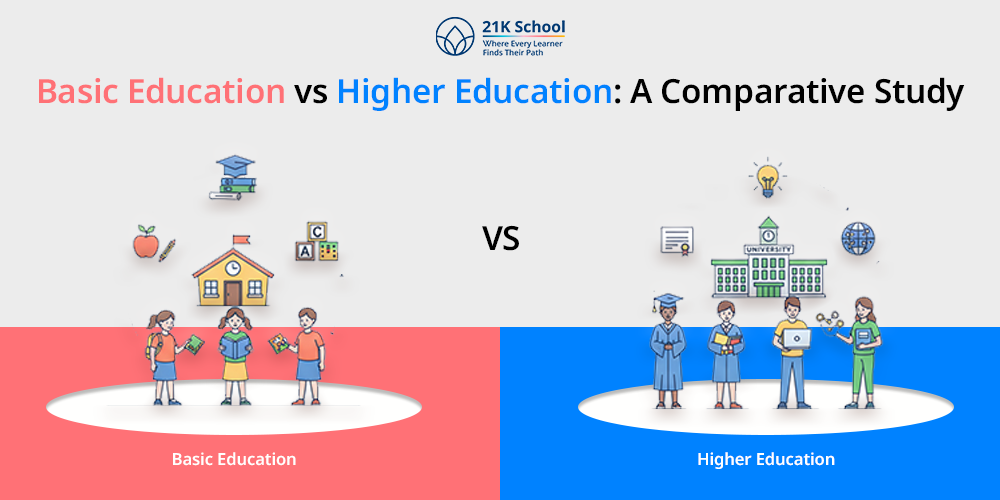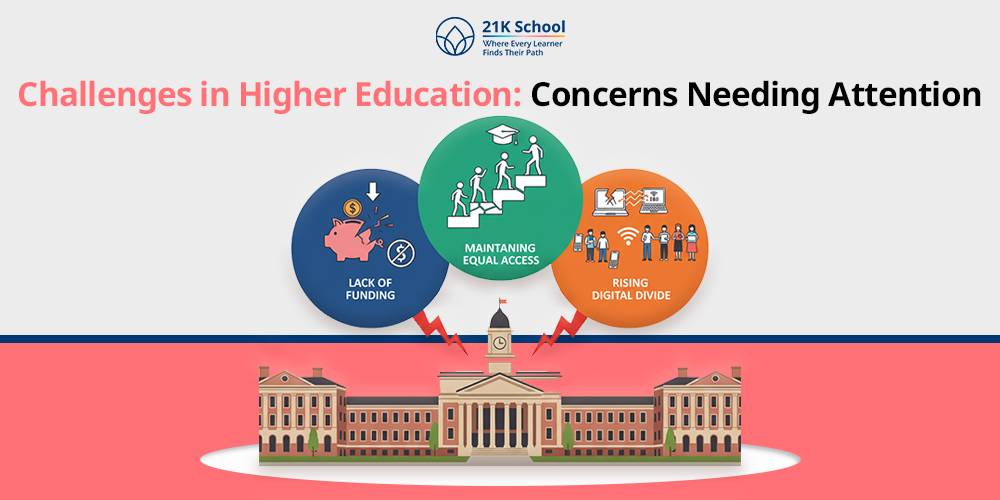
Have you ever thought traditional schooling is all about memorizing and understanding the concepts? However it doesn’t connect students with real world experiences.
To keep this in mind, the 21st century has evolved education and students’ learning techniques. Now we are stepping into a new era.
The era where learning isn’t just about memorizing the facts and figures. It also includes engaging exploring and actual experimentation.
Learning such as dynamic education plays a key role in modern education. It is a flexible approach that is designed to empower students’ learning.
Let’s explore the new way of learning in this changing world.
Table of Contents
What is Dynamic Education?
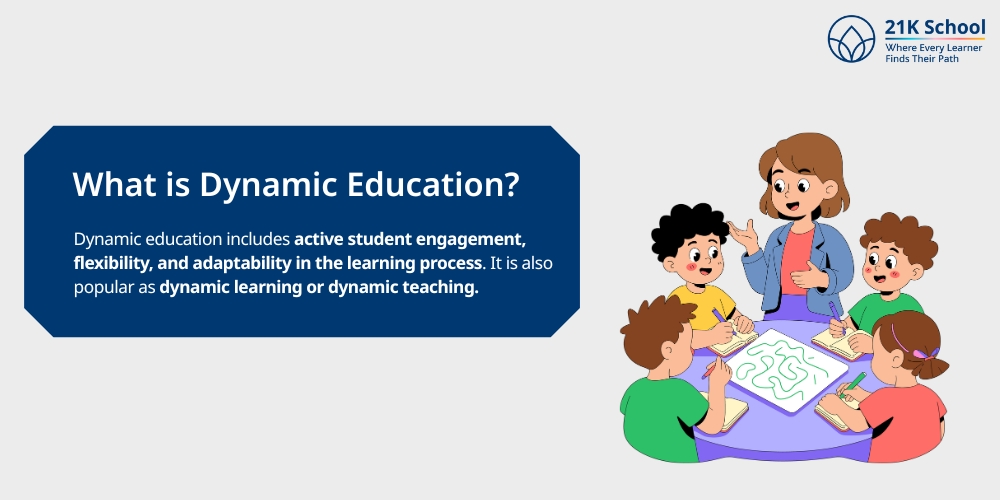
Dynamic education includes active student engagement, flexibility, and adaptability in the learning process. It is also popular as dynamic learning or dynamic teaching.
It helps in effective use of diverse tools, methodologies, and learning pathways. This promotes deeper understanding, student engagement, and lifelong learning habits.
“Dynamic Education refers to a transformative approach to learning designed to equip students with the skills, mindset, and flexibility they need to thrive in the 21st century.”
Core Principles of Dynamic Education
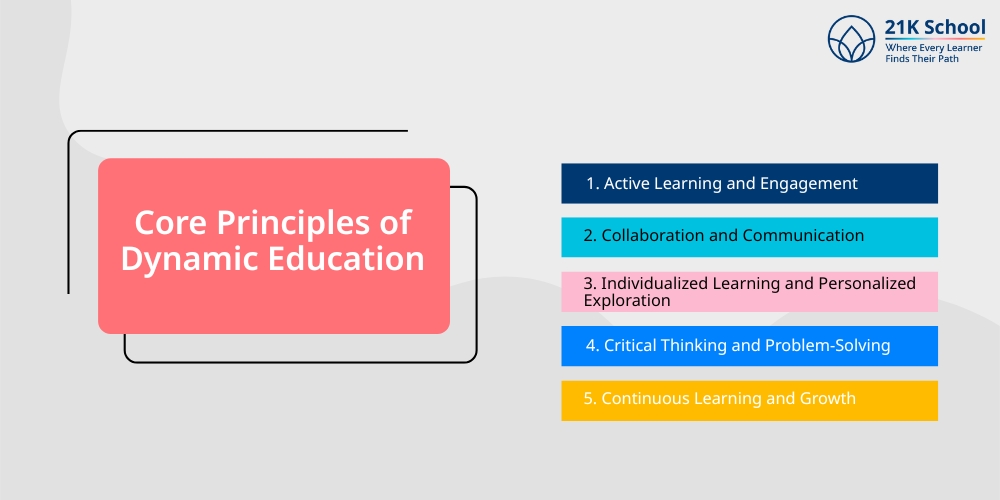
The main focus of dynamic education is creating engaging, student-centered learning experiences that help in active participation and real-world application.
Here are some core principles of dynamic education you must know:
1. Active Learning and Engagement
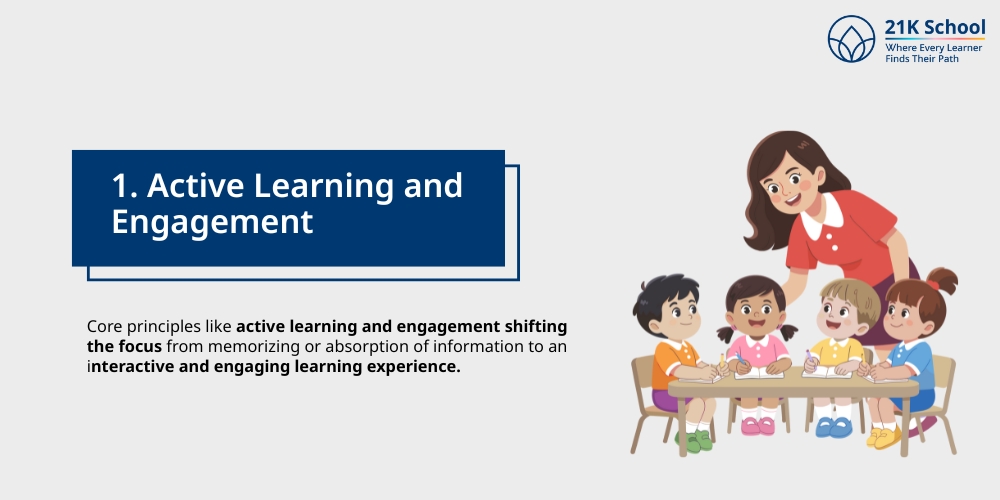
Core principles like active learning and engagement shifting the focus from memorizing or absorption of information to an interactive and engaging learning experience.
Various activities such as group projects, simulations, role-playing, and discussions help students internalize concepts and apply them in real life.
2. Collaboration and Communication
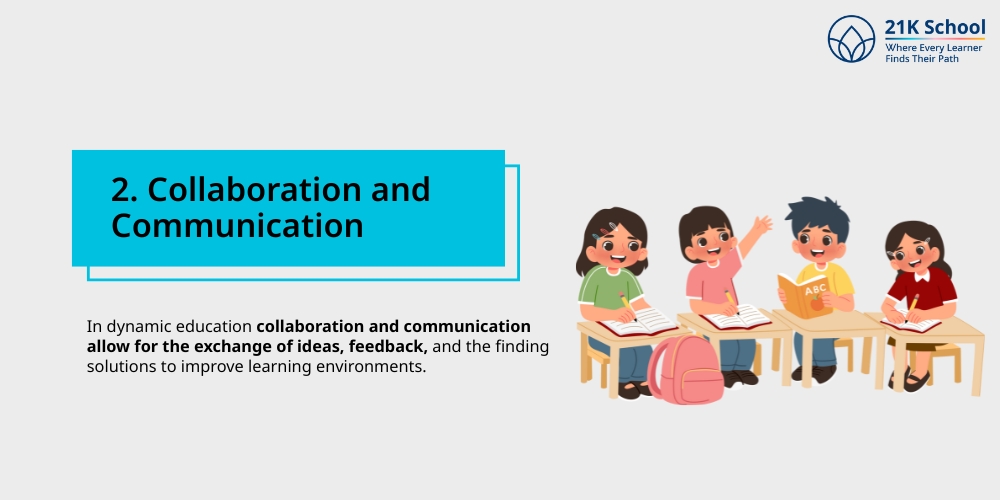
In dynamic education collaboration and communication allow for the exchange of ideas, feedback, and the finding solutions to improve learning environments.
It helps in developing 21st century skills such as critical thinking, problem-solving, and teamwork.
To improve new skills you must read how to develop critical thinking skills in students.
3. Individualized Learning and Personalized Exploration
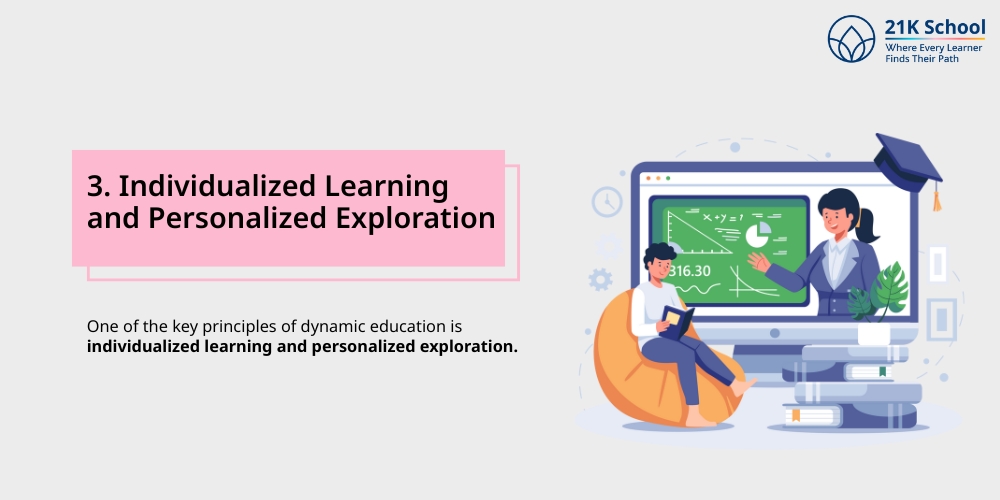
One of the key principles of dynamic education is individualized learning and personalized exploration.
It focuses on designing instruction to each student’s unique needs, interests, and learning styles. The approach is powerful for students making education more inclusive and effective.
4. Critical Thinking and Problem-Solving
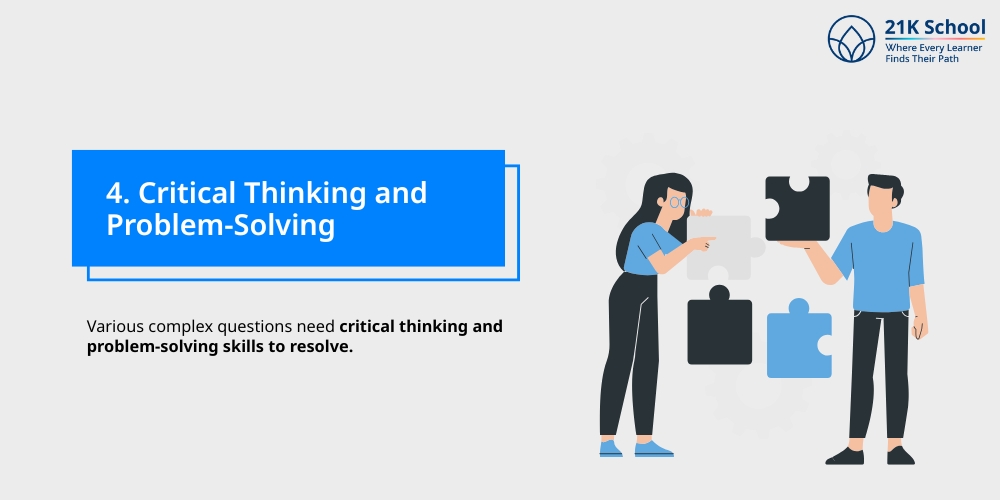
Various complex questions need critical thinking and problem-solving skills to resolve. Also read how to improve problem solving skills.
That’s why dynamic education fosters skills for effective decision-making, innovation, and adaptation in a rapidly changing world.
To know more read what is the primary purpose of developing critical thinking skills.
5. Continuous Learning and Growth
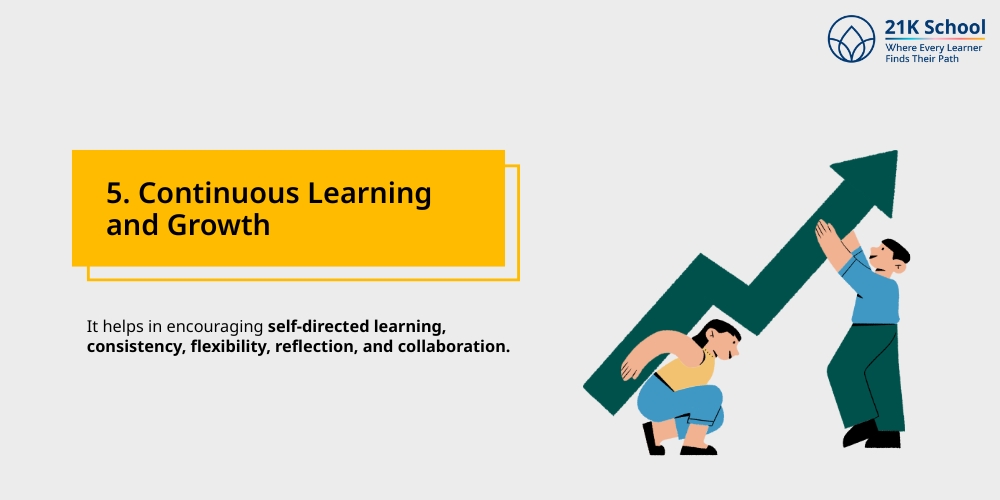
Continuous learning and growth leads to lifelong education. It helps in encouraging self-directed learning, consistency, flexibility, reflection, and collaboration.
Benefits of Dynamic Digital Education
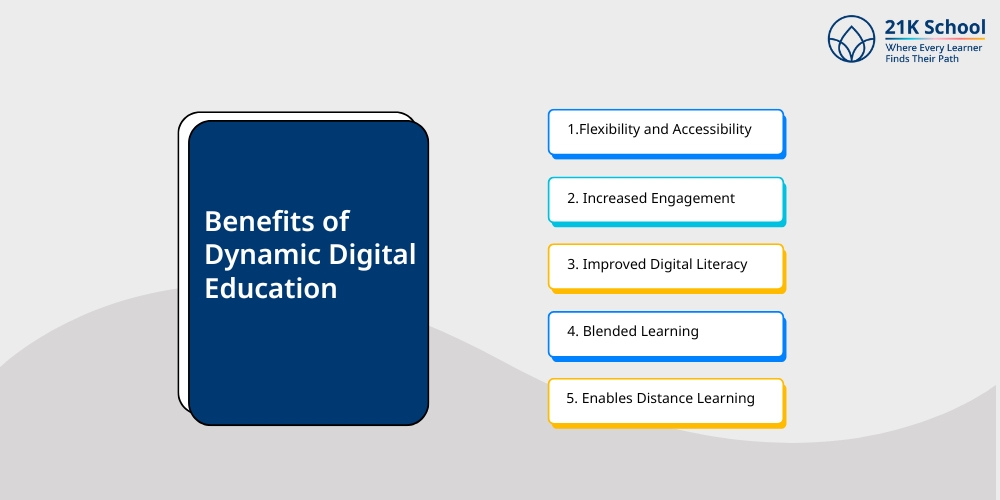
Dynamic digital learning has various benefits. Here’s a more detailed look at the benefits:
1. Flexibility and Accessibility
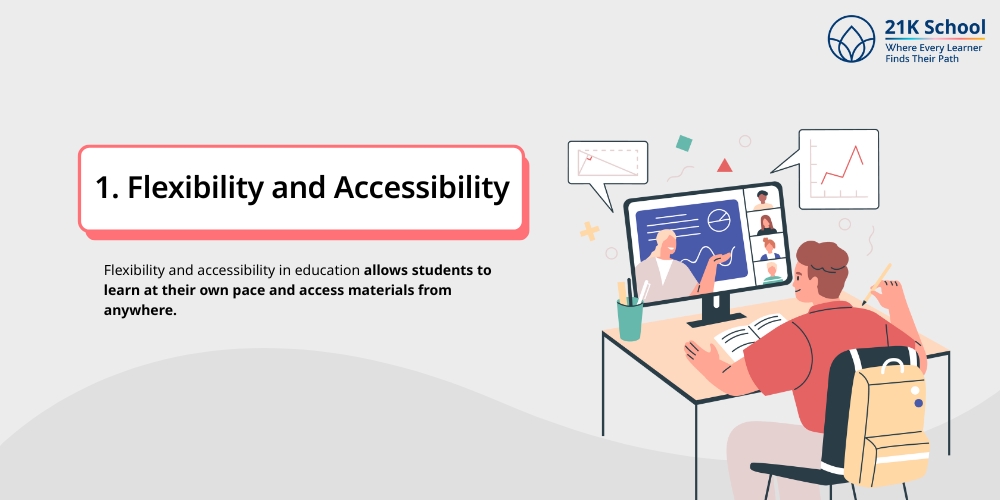
Flexibility and accessibility in education allows students to learn at their own pace and access materials from anywhere.
This tailor the learning experience to their individual needs in school and home. Digital tools make education accessible anytime, anywhere.
2. Increased Engagement
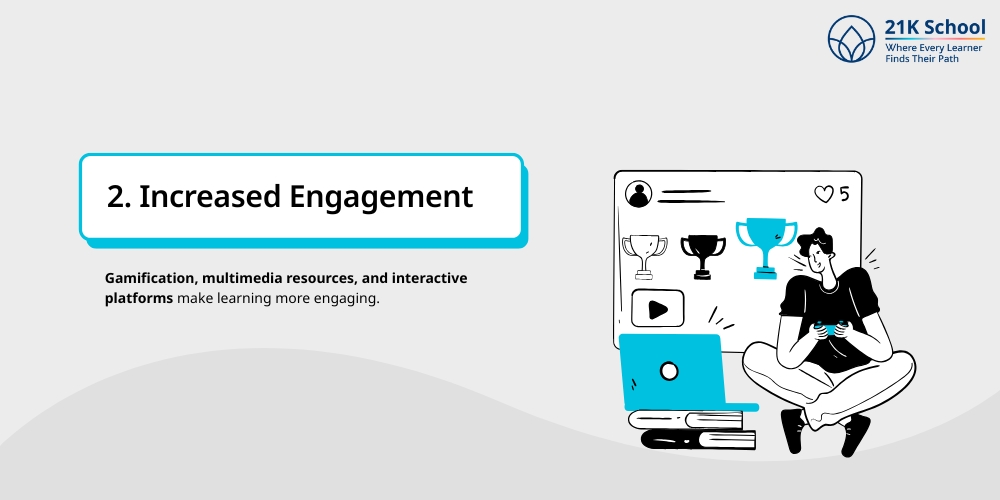
Dynamic teaching increases students’ engagement and learning outcomes. Gamification, multimedia resources, and interactive platforms make learning more engaging.
This way students stay motivated when content is dynamic, visually rich, and contextually relevant.
3. Improved Digital Literacy
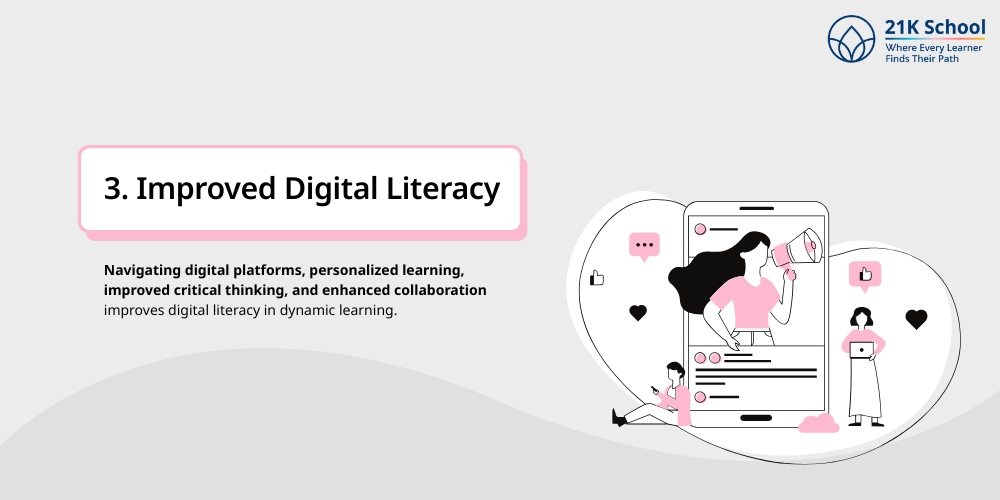
Navigating digital platforms, personalized learning, improved critical thinking, and enhanced collaboration improves digital literacy in dynamic learning.
These skills are best for academics and essential in the modern workplace.
4. Blended Learning
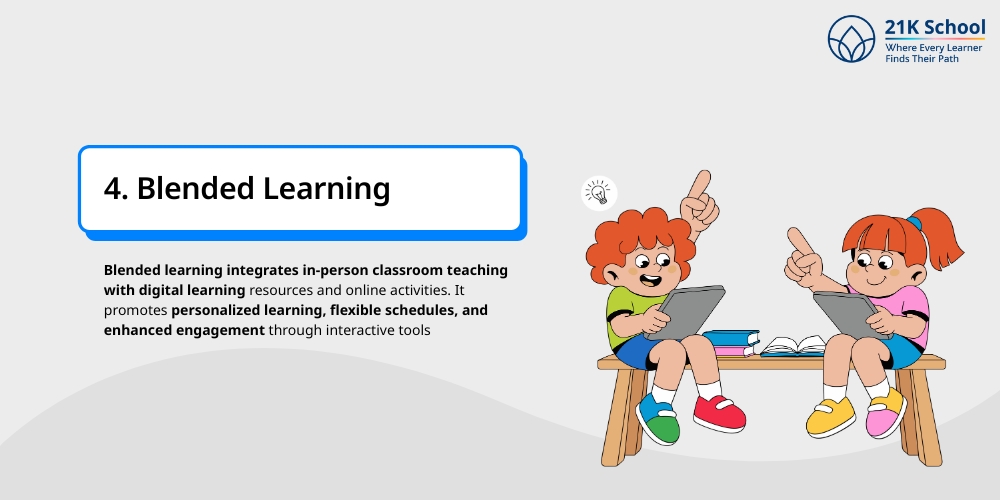
Blended learning integrates in-person classroom teaching with digital learning resources and online activities.
It promotes personalized learning, flexible schedules, and enhanced engagement through interactive tools.
Understand the benefits of blended learning in morden education.
5. Enables Distance Learning
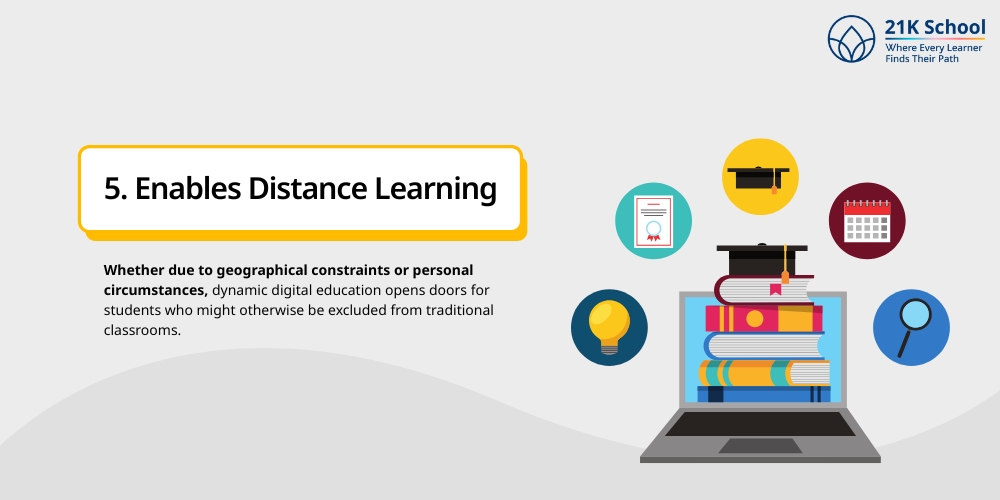
Whether due to geographical constraints or personal circumstances, dynamic digital education opens doors for students who might otherwise be excluded from traditional classrooms.
Distance learning students can participate fully through real-time lessons, discussion boards, and collaborative projects.
Technologies Driving Dynamic Education
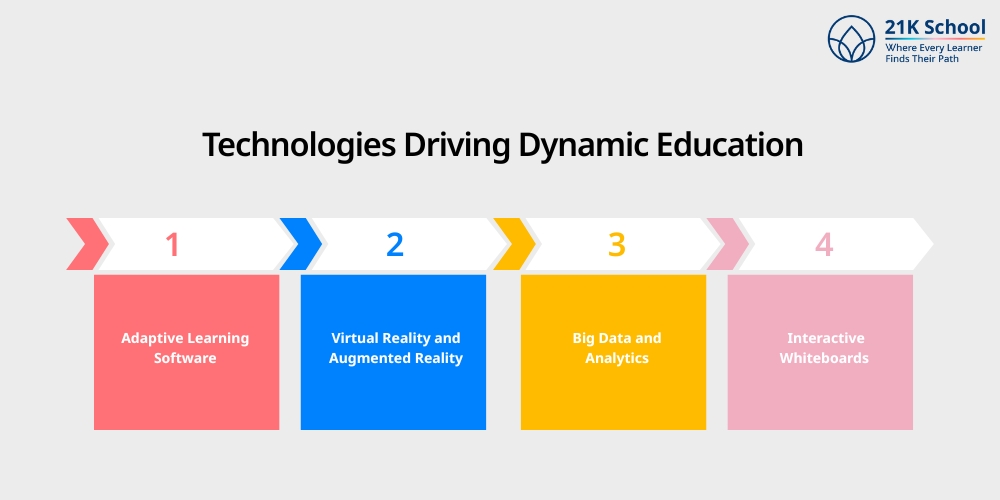
There are many technologies driving dynamic education such as learning management systems AR and VR which allow access beyond traditional classrooms. Learn more about technology in education.
1. Adaptive Learning Software
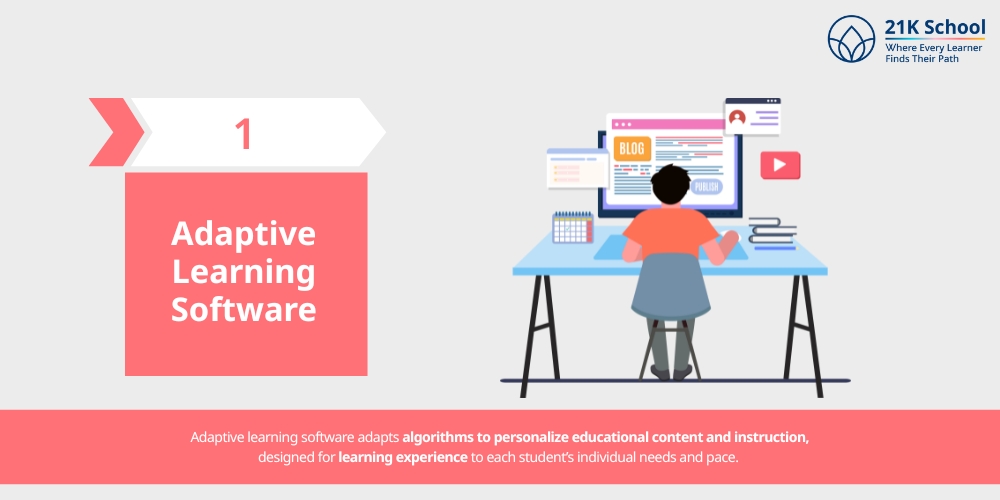
Adaptive learning software adapts algorithms to personalize educational content and instruction, designed for learning experience to each student’s individual needs and pace.
By providing a customized learning path students can improve academic performance and engagement in the classroom.
2. Virtual Reality and Augmented Reality
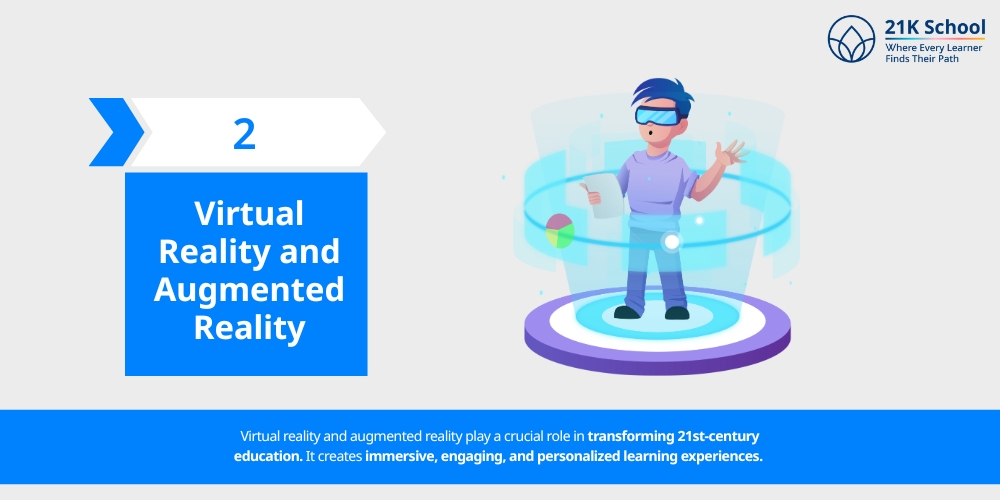
Virtual reality and augmented reality play a crucial role in transforming 21st-century education. It creates immersive, engaging, and personalized learning experiences.
It’s time to connect with the real world by using the right technology because these experiences deepen understanding and spark curiosity.
3. Big Data and Analytics
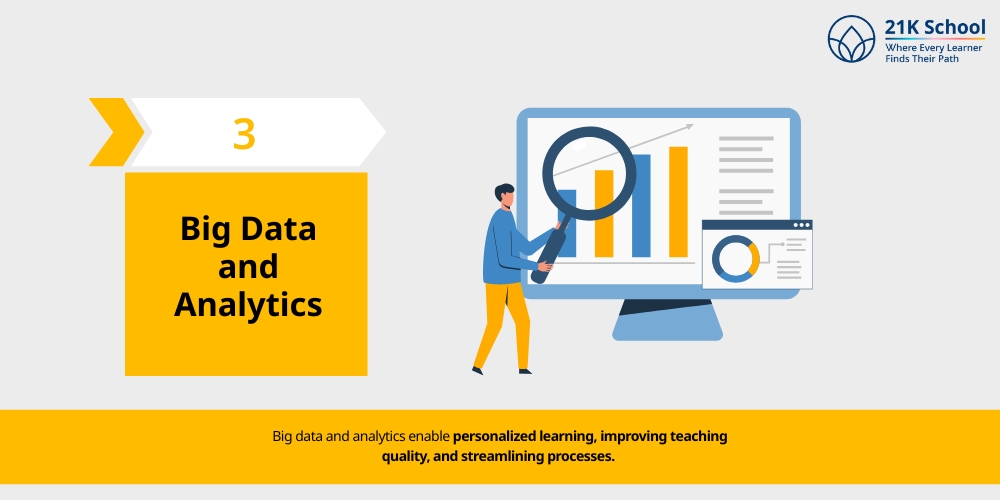
Big data and analytics enable personalized learning, improving teaching quality, and streamlining processes. By analysing student performance teachers can customise their daily tasks.
This not only manages big data of classrooms but also helps educators in analytics.
4. Interactive Whiteboards
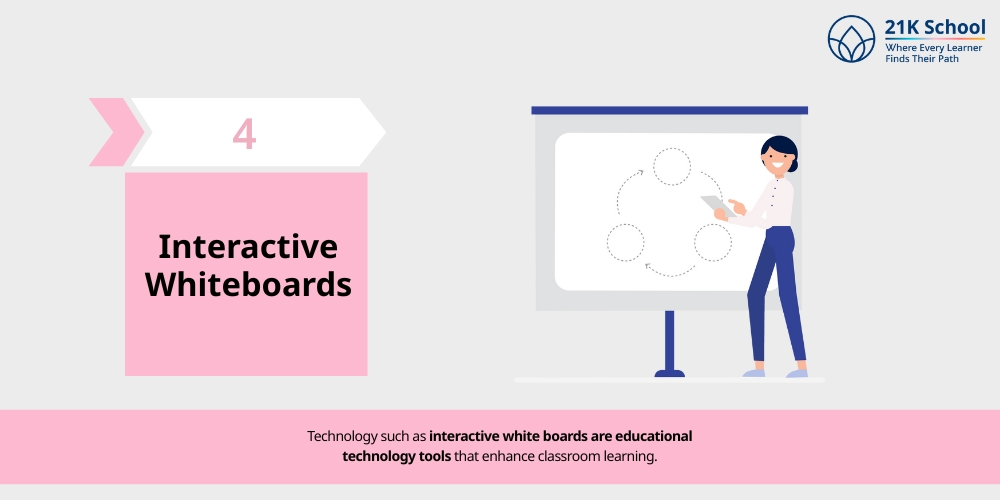
Technology such as interactive white boards are educational technology tools that enhance classroom learning.
It enables interactive displays, collaboration, and digital engagement. It is also known as smart boards or interactive flat panels (IFPs)
Why Do Online Schools Promote Dynamic Education?
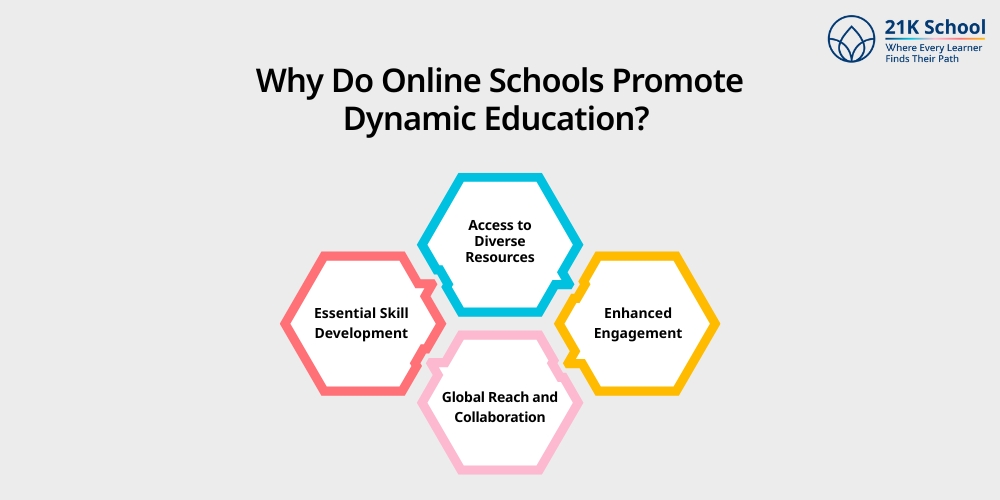
There are advantages of online learning in dynamic education. E-learning schools such as 21K school offer access to a wider range of courses, opportunities and a positive environment.
Here’s how online schools promote dynamic education:
- Access to Diverse Resources:
Online schools offer students access to diverse resources which enable a more engaging and flexible learning experience.
For example: 21K school provides access to a vast library of content, live classes, expert faculties, recorded video and many more.
- Essential Skill Development:
Dynamic education can be promoted by essential skill development of students. Skills like time management skills, self-direction, digital fluency, and continuous learning.
These are crucial for higher education and academic success in the future.
- Global Reach and Collaboration:
Online schooling promotes global reach and collaboration to provide students diverse learning experiences, enhancing communication and teamwork skills and many more.
Teachers prepare students for a globalized world. It offers new opportunities for students to learn from a wider range of experts.
- Enhanced Engagement:
Teachers in online learning incorporate flexible learning environments, interactive tools, and diverse engagement strategies. This helps them to explore new paths.
With the help of online platforms teachers integrate quizzes, interactive content, real-time feedback etc. This constant stimulation keeps students interested and motivated to succeed.
Future Trends in Dynamic Education
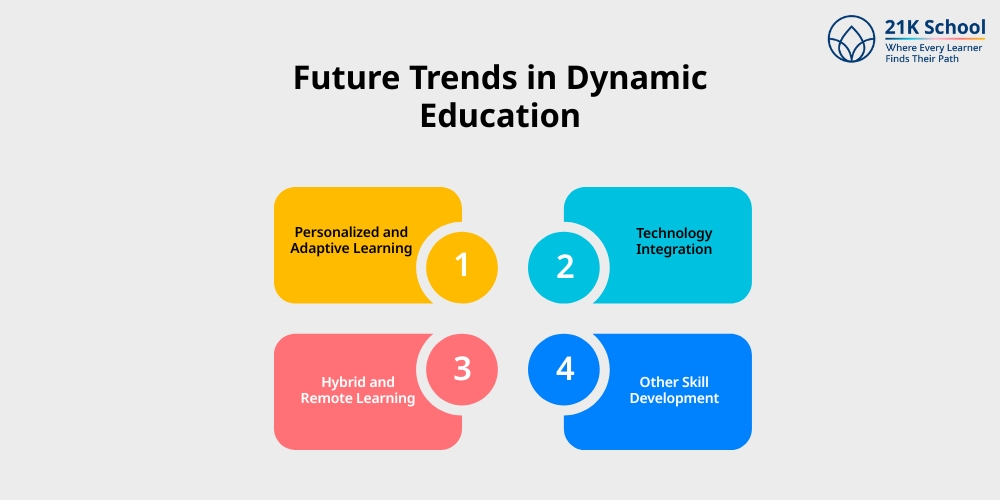
The future trends of dynamic education comprises personalized learning, integration of technology, and a shift towards social-emotional learning.
The rise of online education trends and statistics helps students in growth. Here’s a more detailed look at these trends:
- Personalized and Adaptive Learning:
The future of education depends upon personalized and adaptive learning where AI plays a crucial role.
The future trends in this area include new innovation of AI, development of immersive learning environments, and data insights to optimize learning pathways.
- Technology Integration:
Technology integration like personalized learning, machine learning, immersive experiences with VR/AR, and the use of digital tools for collaboration and communication are vital.
It aims to enhance student engagement and prepare students for new opportunities in the digital era.
- Hybrid and Remote Learning:
Hybrid and remote learning can be a transformative approach in 21st century education.
It’s time to convert traditional education into customizable pathways, allowing students to choose how and where they learn.
- Other Skill Development:
Rather than academics, future trends include improvements in other skill development such as social-emotional learning, creative thinking skills, ethical reasoning.
Various activities like fine motor skills and gross motor skills activities are also vital.
Key Takeaways!
Dynamic learning is not just a method or techniques, but a fundamental reimagining of how learning should be in 21st century education.
The technique helps students to become active participants, ready for new skills, and proper use of technology for learning.
As the educational landscape continues to evolve, embracing dynamic learning is no longer optional, it’s crucial.
Online schools, teachers, and parents should adopt this model to get better results to nurture engaged, capable, and adaptable students for the challenges ahead.

